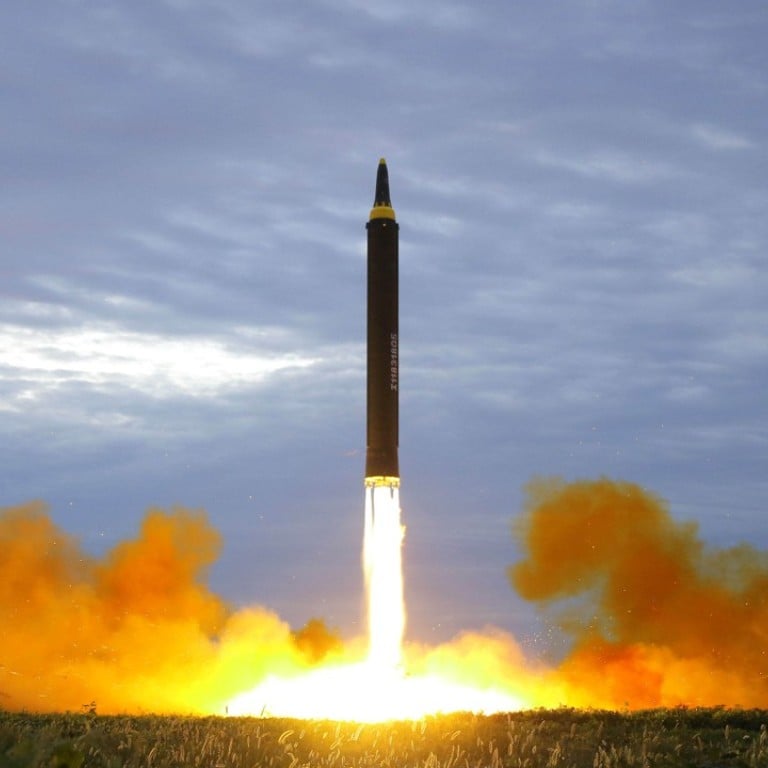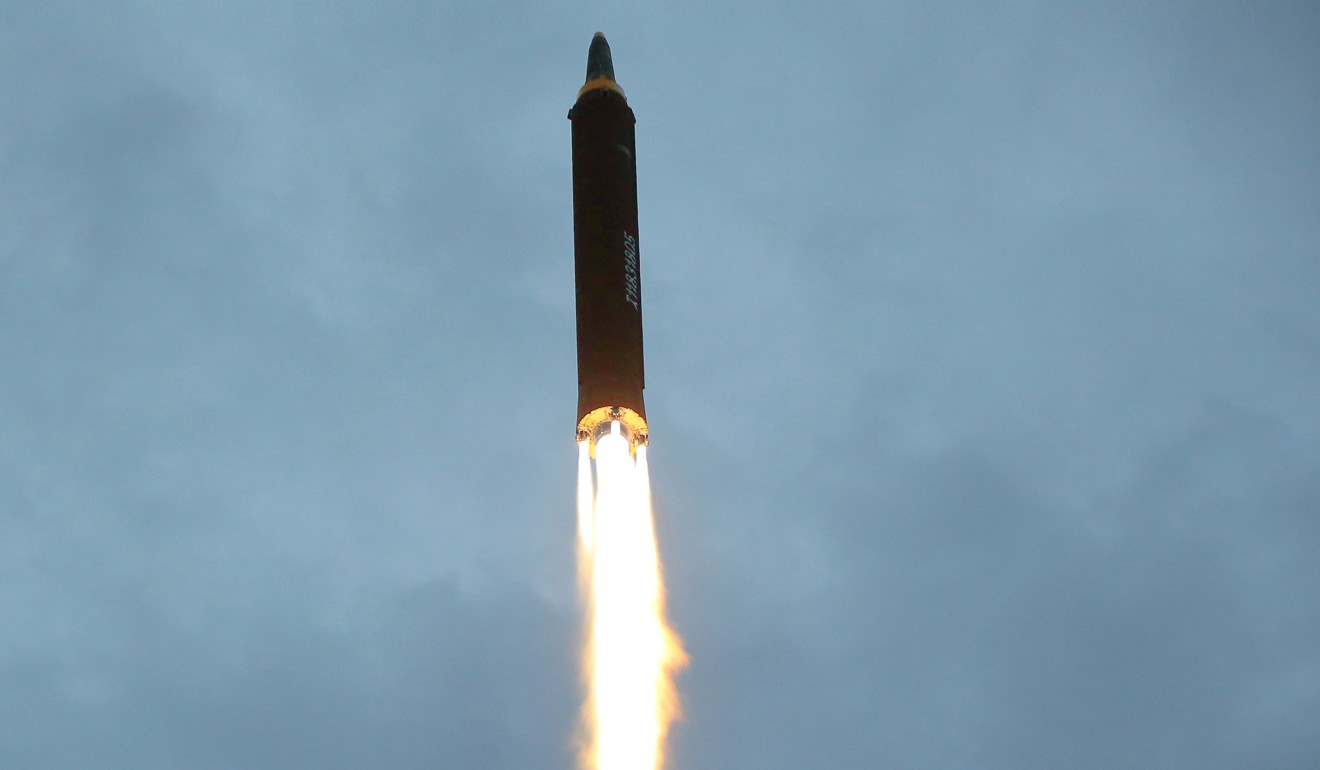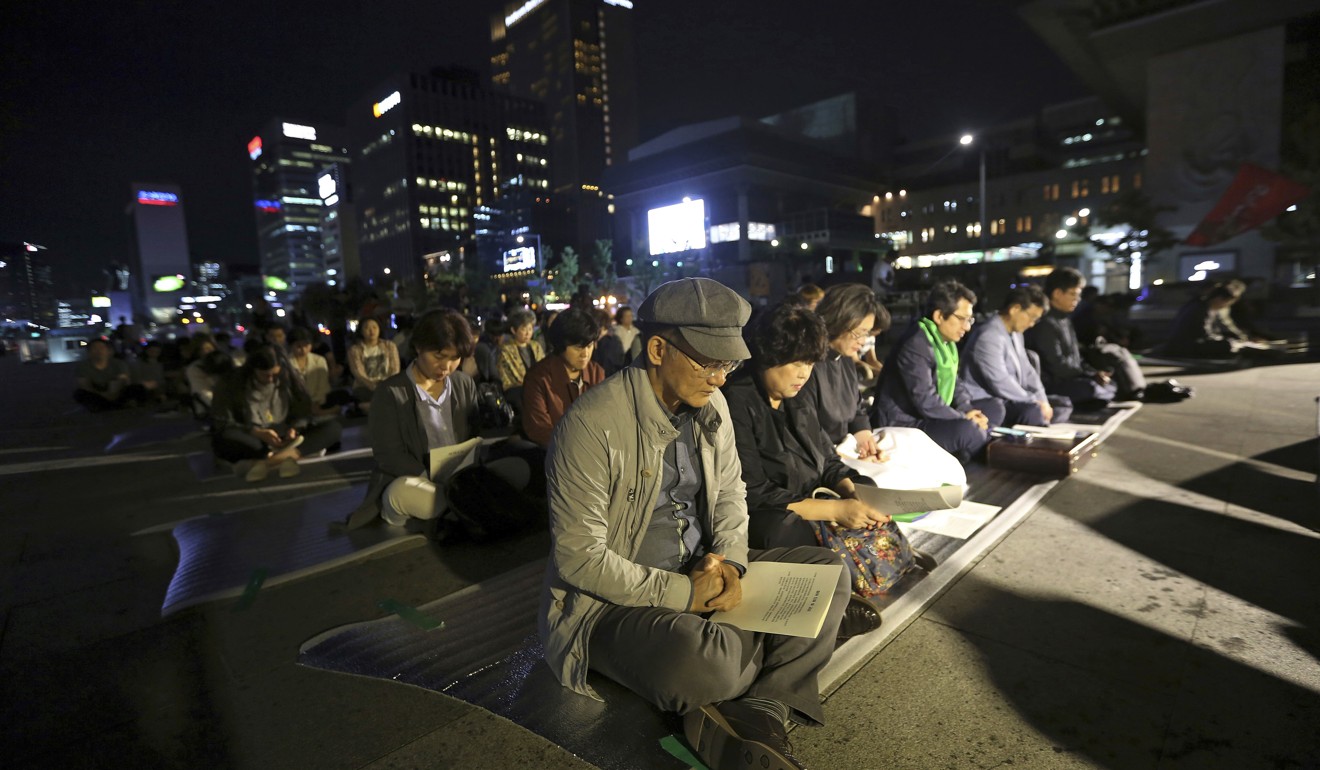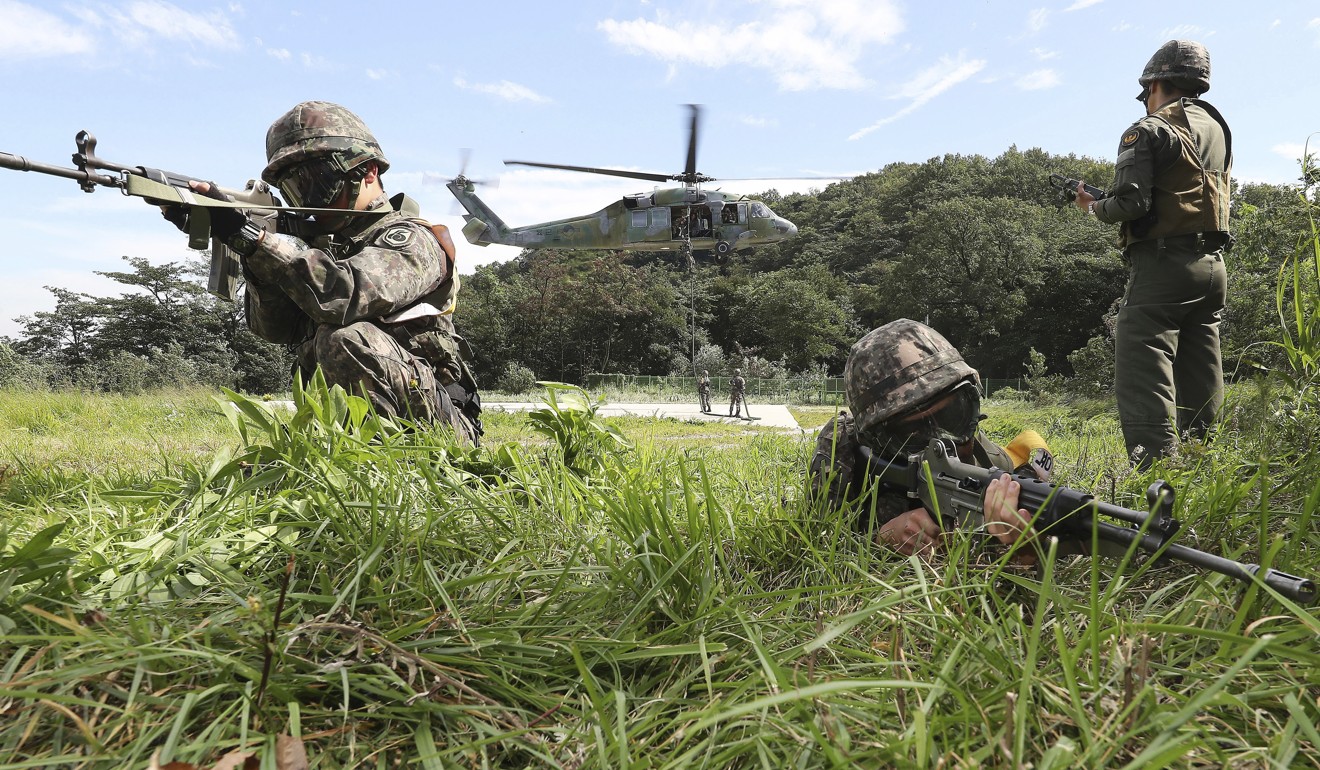
Pentagon vows ‘ironclad’ defence of South Korea and Japan after North Korean missile launch
‘We remain prepared to defend ourselves and our allies from any attack or provocation’
The US Defence Department has committed to the “ironclad” defence of its Asian allies in the face of North Korea’s provocative series of missile tests, including Tuesday’s launch over Hokkaido in northern Japan.
The Pentagon said the launch of the ballistic missile posed no threat to North America.
“Initial assessment indicates the launch of an intermediate range ballistic missile (IRBM),” Lieutenant Colonel Christopher Logan, a Pentagon spokesman said in an email to the South China Morning Post on Tuesday. “We are working with our inter-agency partners on a more detailed assessment and we will provide a public update if warranted.”
Logan added: “The North American Aerospace Defence Command (NORAD) determined this ballistic missile launch did not pose a threat to North America. US Pacific Command determined this ballistic missile launch did not pose a threat to Guam. We continue to monitor North Korea’s actions closely,”

North Korea’s IRBM was launched at 4.57am on Tuesday, Hong Kong time, from near North Korea’s Sunan Air Base. The ballistic missile flew eastward over northern Japan before landing in the Pacific Ocean around 500 nautical miles [926km] east of Japan, according to the Pentagon.
The Pentagon would not specify options to respond to the launch. But Logan said: “Our commitment to the defence of our allies, including the Republic of Korea [South Korea] and Japan, in the face of these threats, remains ironclad. We remain prepared to defend ourselves and our allies from any attack or provocation.”
US President Donald Trump said “all options are on the table” although he notably refrained from repeating his threat of “fire and fury” made against Pyongyang earlier this month.

The US and South Korean joint exercises, called Ulchi-Freedom Guardian, will continue until August 31. Participants include 17,500 US troops and more than 50,000 South Korean troops. The exercises are the two sides’ first large-scale military drills since North Korea’s two intercontinental ballistic missile tests in July.
According to South Korea’s Yonhap News agency, the chairmen of the US and South Korean joint chiefs of staff discussed military and strategic responses to Tuesday’s launch in a telephone conversation.
General Joseph Dunford and General Jeong Kyeong-doo agreed to take measures as soon as possible,, including “military responses”, to show the allies’ strong determination, Yonhap reported.
The US and South Korea have been discussing “additional deployment of strategic assets,” Reuters reported, citing Kim Min-seok, a spokesman for the South Korean Defence Ministry.

Such assets could include the nuclear-powered aircraft carrier USS Ronald Reagan – currently based in Japan – B-2 bombers, nuclear-powered submarines and F-22 stealth fighter jets, according to Agence France-Presse and Yonhap.
Japan would “tirelessly ensure the necessary readiness and collaborate closely with countries including the United States and the Republic of Korea so as to prevent contingencies and take all possible responses should one occur,” according to a statement released by the Japanese cabinet on Tuesday.

